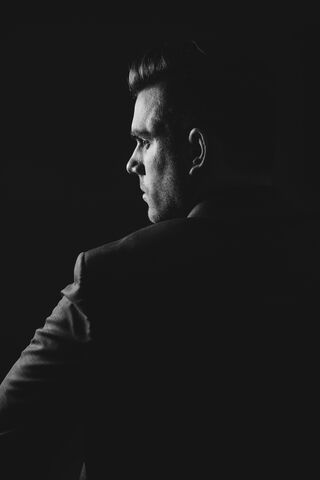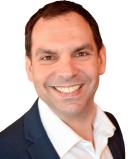Aging
Gay Men and Aging
When you’re a gay man, aging is complicated.
Posted March 12, 2021 Reviewed by Ekua Hagan

The gay culture is unforgiving of aging. It highly prizes sexual potency, perfect bodies, and youth. This is for a good reason; any signs of vulnerability and imperfection feel dangerous in a heteronormative world where there is a high likelihood to be rejected and criticised.
Many gay men will have endured homophobic bullying at school whilst teachers turned a blind eye; having parents not understanding or accepting their sexual orientation; or a difficult and painful coming out process. In the here and now, there is still much homophobia in our society: being looked at in an intimidating or shaming way when holding their same-sex partner’s hand in the streets; hearing homophobic people making complaints when gay characters appear on television; being asked inappropriate sexual questions at a party that would never be asked to a heterosexual person; having to carefully select a holiday destination that is gay-friendly. All of these things, and more, are experiences heterosexual people never have to endure, it is not even in the periphery of their minds.
This is what we call "minority stress," the chronic stress that occurs every day for being gay in a heterosexual world. As a result, gay men (and others in the LGBTQ communities) have to develop a shield to protect themselves. That shield takes many forms. One way that gay men can create a sense of safety and protect themselves against more wounding is by feeling wanted and sexually desired, which comes with looking perfect, showing no signs of vulnerabilities and being young.
Aging is an issue for women too because of the misogynistic world. For gay men, for some reason, 40 years of age seems to be the threshold when gay men flip from being desirable and sexy into being invisible and even sometimes an object of disgust.
Watching the Channel 4 series It’s A Sin reminded me that we didn’t get the chance to see gay men aging when we were growing up because many of them died in their 20s during the AIDS epidemic. The gay male population is missing a generation of older men who could have been mentors and teachers offering guidance in this homophobic world. With the absence of the older wisdom in the gay community, youth became the only safety: As long as one is young and beautiful, they will be desired and therefore they won’t be alone. The gay scene responded to that by sexualising youth and perfect bodies, whilst denigrating aging.
The dilemma is that most gay men want to connect and love each other, but they’re also having trouble connecting because genuine intimacy requires the willingness to be vulnerable.
The dark side of this is that we are leaving behind the aging gay men who survived homophobic trauma, the AIDS epidemic, and those who fought for the equal rights that we are enjoying today.
Gay men simply don’t have a model of what the path of aging looks like. We only see young gay men partying, having sex, or in casual relationships. Many gay men still carry internalised homo-negativity with the subconscious core belief that it is impossible for gay men to love one another, feeling undeserving of love.
Yet, there are many gay men in strong and loving relationships, monogamous ones and polyamorous ones, living their lives like everybody else. They are many aging gay men who have much wisdom to give to their younger peers.
It is time to work together to shift the gay culture from the one being critical of aging to more human connections, where we can embrace each other, because, after all, we all belong to the same family, the LGBTQ family — the Rainbow Family. Many gay men never felt fully understood by their family of origin. It can be a very lonely experience. But as adults, we can choose our family, and there are many people in the Rainbow Family ready to open their arms, guide, and love (not only have casual sex).
For gay men aged 40 and over to be desirable, they have to be pushed into the label of "Daddy." For some, it’s a great turn-on, but for others it is unwelcomed. Not everybody wants to play the Daddy-Twink games. Some want to have sex and feel sexually desired just as they are, without fearing being dismissed or rejected. This needs to change because we need to learn to appreciate all kinds of gay male body shapes and ages.
Aging is a privilege. It’s A Sin vividly shows us that many gay men didn’t get to age, fulfill their potential, live their dreams, find love. Let’s celebrate aging. Let’s embrace the knowing and wisdom that we develop as we age. Let’s be grateful for having enough time alive to make something of our lives. We often take having time for granted, but it is a precious gift. And let’s not be afraid of having sex with a gay man over the age of 40 — it can be really hot!
When we see an aging gay man in a bar, let’s not look down on him, or wish he could go away. Instead, we can embrace his presence, talk to him, be curious about him. The likelihood is that he would have lived a lot of life with a lot of experiences that might be interesting and useful for us to know. We come from a long way. The Rainbow Family has a rich and vibrant history. We have many stories of survival, resilience, strength, love, joy, and beauty. What a shame to miss out on all of those stories, the stories of the LGBTQ people, our people.
Let’s create more of a community, open our arms to each other, create that Rainbow Community where nobody needs to feel rejected or out of place. Now, more than ever, we need it.




